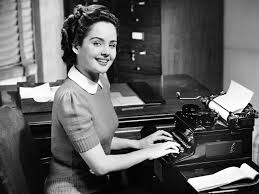All these years of writing I’ve always wondered whether there should be one or two spaces after a period, and I’ve never bothered to find out the definitive answer. I’ve defaulted to one since I can remember, but was that correct? Of course with modern search engines the answer shouldn’t be difficult to find, so I searched. I thought the rule, whatever it might be would be arbitrary, that some prefer two spaces and some one. But the only reason there was ever a need to put in two spaces had to do with the technology of printing, as I was surprised to find out. I found a good explanation at The Writer’s Dig:
The “two spaces after period” rule was established during the days of typesetters, when additional space was needed to show the difference between the spacing between words (which was smaller) and the spacing between sentences (which was larger). When typewriters came around, they had only one font and all the letters were monospaced, or took up the same amount of space. That means that the skinny “l” and wider “w” occupied the same amount of space on paper. People mimicked what they believed to be the format they’d grown used to by adopting two spaces after a period—and that’s how the so-called two-space rule was born.
With the dawn of computers, word processing programs not only began offering an absurd number of fonts, but each font was programmed to space characters proportionally (“l” takes up about a third of the space “w” does). In turn, most computer fonts will automatically give you enough room between sentences with one space. And, according to nearly all stylebooks, including The Associated Press Stylebook and the Chicago Manual of Style, you always use a single space after a period.
The point is, it’s not only widely accepted, it’s expected that you use only one space after a period. Sorry two-spaces, it’s time to make the switch.
So if you’re like me and just didn’t know, fear no more! A single space will do.

